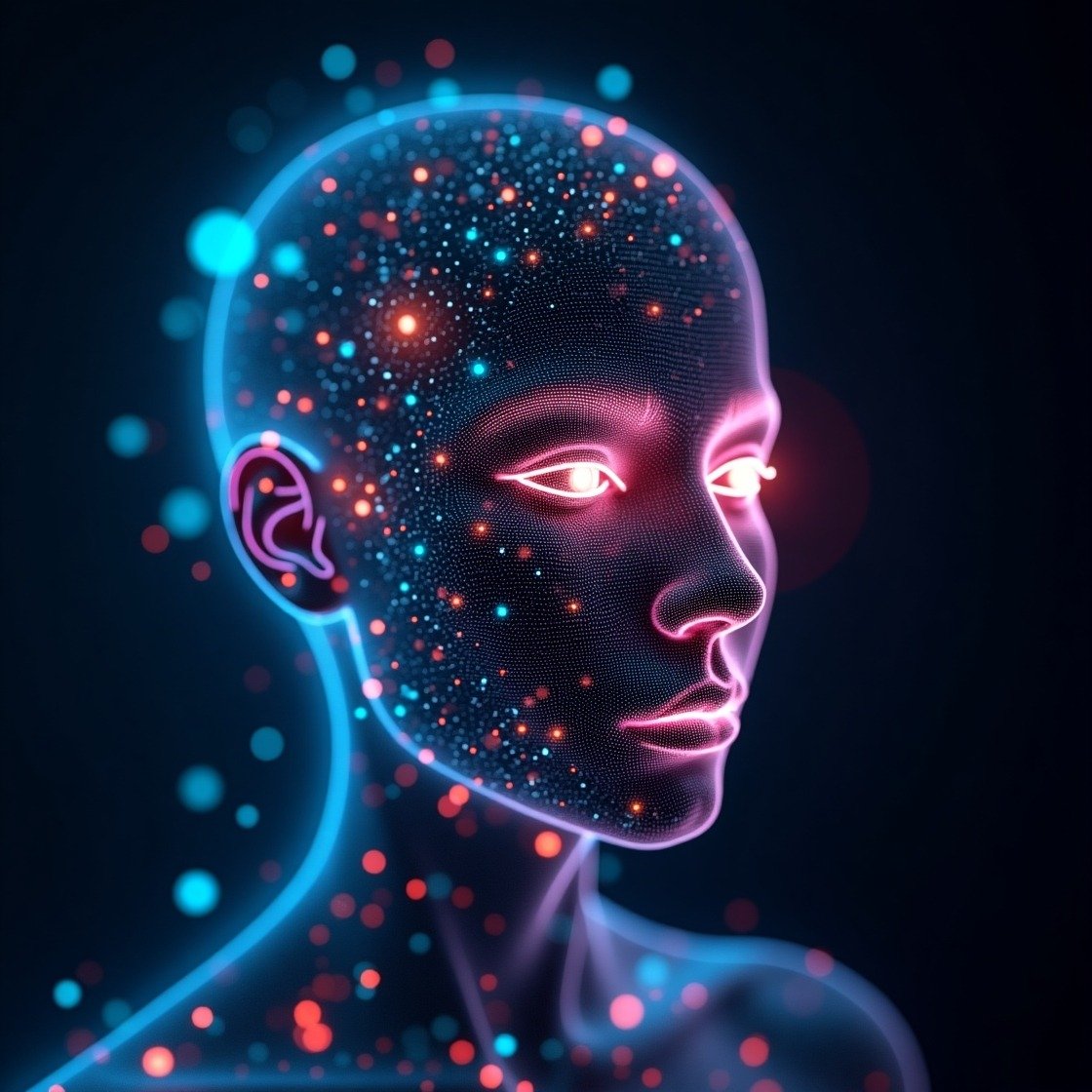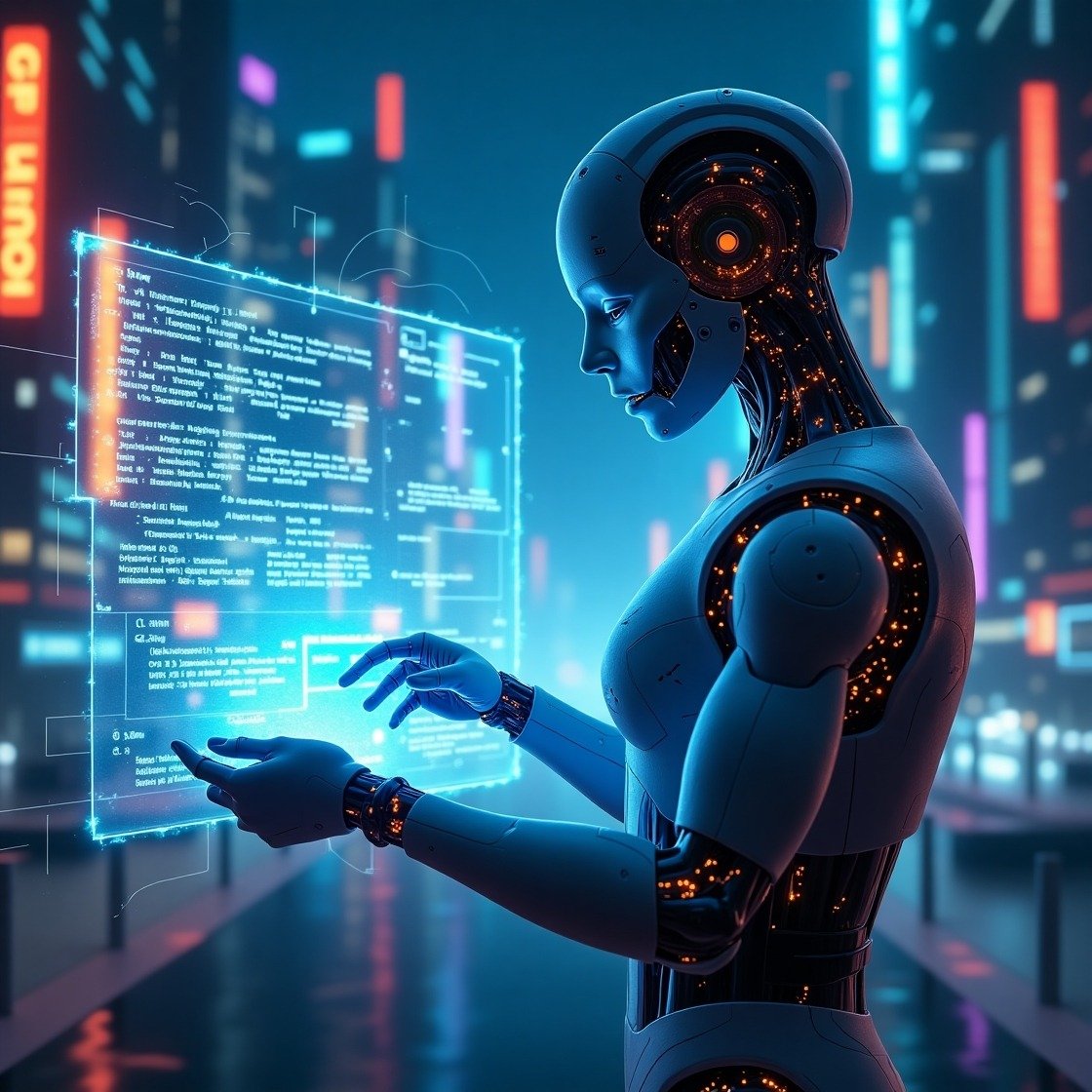In today’s fast-paced digital era, AI-Powered Image Recognition is transforming the way businesses and industries operate. From enhancing security systems to automating image-based data analysis, this technology is not only reshaping the technological landscape but also driving innovation in various sectors. In this comprehensive article, we will explore the ins and outs of AI-powered image recognition, discuss the top tools available, and provide actionable strategies to leverage these advancements in your business. Whether you are a seasoned tech professional or a curious entrepreneur, understanding these tools can help you unlock new opportunities for growth and efficiency.
What is AI-Powered Image Recognition?
AI-powered image recognition refers to the ability of computer systems to interpret and process visual data using artificial intelligence techniques. By leveraging advanced algorithms, machine learning, and deep learning, these systems can identify objects, patterns, and even emotions in images. The key components include:
- Computer Vision: The field of study that trains computers to interpret and understand the visual world.
- Machine Learning: Techniques that allow computers to learn from data and improve over time without being explicitly programmed.
- Deep Learning: A subset of machine learning involving neural networks with many layers, enabling complex pattern recognition and decision-making.
These technologies combine to create systems capable of processing and analyzing images with a high degree of accuracy, making them invaluable in industries such as healthcare, retail, security, and more.
The Evolution and Importance of AI-Powered Image Recognition
The journey of image recognition began with simple pattern recognition techniques, evolving through the introduction of neural networks and deep learning models. Today, AI-powered image recognition is at the forefront of technological innovation due to its ability to:
- Increase Efficiency: Automate tasks like sorting images, detecting anomalies, and monitoring activities in real time.
- Enhance Accuracy: Minimize human error in tasks such as quality control and security surveillance.
- Reduce Costs: Streamline processes and lower operational expenses through automation.
- Drive Innovation: Enable new applications in augmented reality, autonomous vehicles, and personalized customer experiences.
The growing demand for enhanced visual data analysis has led to significant investments in AI technologies, making them accessible to businesses of all sizes.
Key Benefits of AI-Powered Image Recognition
Adopting AI-powered image recognition tools brings several tangible benefits to businesses and organizations:
- Enhanced Security and Surveillance:
- Real-time monitoring systems capable of detecting suspicious activities.
- Facial recognition for secure access and identity verification.
- Improved Customer Experience:
- Personalized recommendations based on visual data analysis.
- Automated tagging and categorization of products in e-commerce.
- Operational Efficiency:
- Automating repetitive tasks such as inventory management and quality control.
- Faster and more accurate data processing, leading to better decision-making.
- Cost Reduction:
- Lower reliance on manual labor for image analysis tasks.
- Streamlined processes that reduce operational expenses.
- Innovation and Competitive Advantage:
- Development of novel applications in various industries.
- Staying ahead of competitors by adopting cutting-edge technologies.
Top AI-Powered Image Recognition Tools
Here are some of the leading tools in the market that harness the power of AI-powered image recognition:
1. Google Cloud Vision API
Overview: Google Cloud Vision API is a robust tool that integrates easily with existing applications. It provides powerful image analysis capabilities by leveraging Google’s deep learning models.
- Features:
- Label detection and object localization
- Optical Character Recognition (OCR)
- Landmark detection and facial analysis
- Benefits:
- Scalability for businesses of all sizes
- Integration with other Google Cloud services
- High accuracy and fast processing times
2. Amazon Rekognition
Overview: Amazon Rekognition is a comprehensive image and video analysis service provided by AWS. It allows users to analyze images and videos for a wide range of use cases.
- Features:
- Real-time facial recognition and analysis
- Object and scene detection
- Celebrity recognition for media applications
- Benefits:
- Seamless integration with AWS services
- Advanced security features
- Continuous updates and improvements based on user feedback
3. Microsoft Azure Computer Vision
Overview: Microsoft Azure Computer Vision offers a suite of image processing and analysis tools that cater to diverse industry needs. It utilizes the latest AI research to deliver high-performance image recognition.
- Features:
- Comprehensive image analysis, including text extraction and scene recognition
- Customizable models for specific business needs
- Integration with other Microsoft Azure services
- Benefits:
- Strong support for enterprise solutions
- Flexibility with custom model training
- Competitive pricing and scalability
4. IBM Watson Visual Recognition
Overview: IBM Watson Visual Recognition is designed to help businesses classify, analyze, and interpret visual content. It offers both pre-trained and customizable models.
- Features:
- Advanced tagging and classification of visual content
- Customizable model training
- Integration with IBM’s suite of AI and cloud solutions
- Benefits:
- High degree of customization
- Reliable support from IBM’s extensive AI research
- Versatility across various industries
5. Clarifai
Overview: Clarifai is a leader in computer vision and deep learning technologies. It offers powerful image and video recognition capabilities with an emphasis on ease of use and high customization.
- Features:
- Customizable models tailored to specific needs
- Real-time image recognition and analysis
- Extensive API support and integrations
- Benefits:
- Quick deployment and high scalability
- Suitable for a range of applications from retail to security
- Comprehensive documentation and developer support
Choosing the Right AI-Powered Image Recognition Tool
When selecting an AI-powered image recognition tool, it’s important to consider several factors:
- Accuracy and Speed:
- Evaluate the tool’s performance in real-time image processing.
- Check for benchmarks and case studies that demonstrate high accuracy.
- Ease of Integration:
- Assess the tool’s compatibility with your existing systems.
- Look for robust API support and documentation.
- Customization Options:
- Determine if the tool allows for custom model training to cater to your specific needs.
- Consider the flexibility of the tool to adapt to changing business requirements.
- Cost Efficiency:
- Compare pricing models and scalability options.
- Factor in potential savings from reduced manual intervention and improved efficiency.
- Security and Privacy:
- Ensure the tool complies with data protection regulations.
- Look for advanced security features like encryption and access control.
How AI-Powered Image Recognition is Transforming Industries
The applications of AI-powered image recognition span across various industries. Here are some examples:
Healthcare
- Medical Imaging:
AI-powered systems can analyze X-rays, MRIs, and CT scans to detect anomalies such as tumors and fractures with high precision. This leads to early diagnosis and improved patient outcomes. - Remote Monitoring:
Tools can assist in monitoring patient conditions in real time, helping doctors provide timely interventions.
Retail
- Visual Search:
Customers can upload images to find similar products, enhancing the online shopping experience. - Inventory Management:
Automated image recognition systems help in tracking stock levels, ensuring that inventory is accurately managed.
Security and Surveillance
- Facial Recognition:
Enhance security by identifying individuals in real time, reducing the risk of unauthorized access. - Object Detection:
Monitor public spaces or secure facilities with systems that can detect suspicious objects or behaviors.
Automotive
- Autonomous Vehicles:
Image recognition plays a critical role in self-driving cars by analyzing road conditions, detecting obstacles, and ensuring passenger safety. - Driver Assistance Systems:
Advanced driver assistance systems (ADAS) use image recognition to alert drivers of potential hazards and assist in safe navigation.
Agriculture
- Crop Monitoring:
Drones equipped with image recognition can monitor crop health, detect pest infestations, and provide data for precision farming. - Yield Prediction:
Analyzing images of fields helps predict crop yields, allowing farmers to make informed decisions about resource allocation.
Media and Entertainment
- Content Moderation:
Automatically filter out inappropriate content in images and videos to ensure compliance with community standards. - Personalized Experiences:
Enhance user experiences by recommending content based on visual analysis of user preferences.
Strategies to Maximize the Benefits of AI-Powered Image Recognition
To fully leverage the potential of AI-powered image recognition, consider the following strategies:
1. Invest in Quality Data:
- Data is King:
The accuracy of AI models is heavily dependent on the quality and quantity of data. Invest in gathering high-quality, annotated images to train your models effectively.
2. Continuous Model Training and Evaluation:
- Regular Updates:
AI models should be continuously trained and updated with new data to adapt to changing scenarios. - Performance Metrics:
Regularly evaluate model performance using metrics like accuracy, precision, and recall to ensure optimal functioning.
3. Integrate with Existing Systems:
- Seamless Integration:
Ensure that the AI-powered image recognition tool integrates smoothly with your existing IT infrastructure. - API Utilization:
Utilize APIs for real-time data exchange and integration with other business applications.
4. Focus on User Experience:
- Intuitive Interface:
Design user-friendly interfaces that make it easy for staff to interact with the system. - Feedback Mechanisms:
Implement feedback loops that allow users to flag errors, thereby contributing to continuous system improvement.
5. Security and Compliance:
- Data Protection:
Adhere to best practices in data security to safeguard sensitive information. - Regulatory Compliance:
Ensure that your system complies with local and international data protection regulations.
6. Monitor Industry Trends:
- Stay Updated:
The field of AI is constantly evolving. Keep abreast of the latest research, tools, and case studies to remain competitive. - Adopt Best Practices:
Engage with industry experts and participate in tech conferences to learn about emerging trends and best practices.
Implementing AI-Powered Image Recognition in Your Business
Adopting AI-powered image recognition in your organization involves careful planning and execution. Here’s a step-by-step approach:
- Define Objectives:
- Identify the specific problems or tasks that can be solved using image recognition, such as improving security, enhancing customer experience, or automating quality control.
- Assess Your Data:
- Evaluate the quality and volume of your image data.
- Determine if you need to invest in additional data collection or labeling efforts.
- Choose the Right Tool:
- Compare various AI-powered image recognition tools based on features, cost, integration, and support.
- Consider starting with a pilot project to test the tool’s effectiveness before full-scale deployment.
- Plan Integration:
- Work with IT teams to ensure smooth integration of the chosen tool with your existing systems.
- Plan for scalability to accommodate future growth.
- Train Your Team:
- Provide comprehensive training to your team on how to use and maintain the system.
- Establish a support system to troubleshoot issues and ensure continuous improvement.
- Monitor and Optimize:
- Regularly monitor system performance and gather feedback from users.
- Optimize the system by updating models and integrating new data as needed.
Case Studies: Real-World Applications of AI-Powered Image Recognition
To better understand the transformative impact of AI-powered image recognition, consider the following case studies:
Case Study 1: Enhancing Retail Experiences
A leading e-commerce retailer integrated an AI-powered image recognition tool to enable visual search capabilities. Customers could upload images of desired products and instantly find similar items in the retailer’s catalog. This led to:
- A 30% increase in customer engagement
- Improved conversion rates due to more accurate product recommendations
- Enhanced inventory management through automated tagging and categorization
Case Study 2: Revolutionizing Healthcare Diagnostics
A healthcare provider implemented AI-powered image recognition to analyze medical scans. The system accurately identified early signs of diseases, reducing diagnosis times and improving treatment outcomes. Key benefits included:
- Early detection of anomalies
- Reduced workload for radiologists
- Higher accuracy in diagnoses, leading to better patient care
Case Study 3: Transforming Security Protocols
A security company adopted an advanced facial recognition system integrated with real-time surveillance cameras. The technology helped in quickly identifying unauthorized individuals, leading to:
- Enhanced security measures
- Faster response times during incidents
- Increased trust and safety for clients
Future Trends in AI-Powered Image Recognition
As technology continues to evolve, several trends are set to shape the future of AI-powered image recognition:
- Increased Integration with IoT Devices:
Expect to see more smart devices integrating image recognition for enhanced monitoring and automation. - Advancements in Deep Learning:
Ongoing improvements in deep learning algorithms will drive even higher accuracy and efficiency. - Real-Time Processing:
With faster hardware and optimized software, real-time image recognition will become more ubiquitous, driving applications in autonomous vehicles and live surveillance. - Augmented Reality and Virtual Reality:
Combining image recognition with AR/VR technologies will open new avenues in gaming, retail, and remote assistance. - Enhanced Customization:
Future tools will offer more customization options, enabling businesses to tailor image recognition systems to their unique needs. - Ethical and Privacy Considerations:
As the technology becomes more prevalent, emphasis on ethical use and data privacy will drive regulatory standards and best practices.
Best Practices for SEO Optimization in Your Article
Ensuring that your article is optimized for search engines can significantly improve its visibility. Here are some best practices:
- Keyword Placement:
- Use the main keyword AI-Powered Image Recognition in your title, headings, and throughout the content.
- Incorporate LSI keywords such as “computer vision,” “machine learning,” “deep learning,” and “object detection” naturally within the text.
- Content Structure:
- Use clear headings and subheadings (H2, H3) to break up the content.
- Utilize bullet points and numbered lists for easy reading and better on-page SEO.
- Meta Description and Tags:
- Craft an engaging meta description that includes the main keyword and encourages clicks.
- Include relevant SEO tags to boost discoverability.
- User Engagement:
- Write in a conversational yet professional tone.
- Include visuals and infographics to support the text and improve user retention.
- Internal and External Linking:
- Link to authoritative sources and related articles within your website to enhance SEO.
- Include outbound links to high-quality sites for added credibility.
Conclusion
AI-Powered Image Recognition is more than just a technological advancement—it is a transformative tool that is redefining how businesses operate in the digital age. By leveraging the capabilities of advanced algorithms, deep learning, and comprehensive image analysis tools, organizations can improve security, enhance customer experiences, and streamline operations. Whether you’re in healthcare, retail, security, or any other industry, the integration of AI-powered image recognition can give you a competitive edge and drive innovation.
By understanding the benefits, choosing the right tools, and implementing best practices, you can harness the full potential of this technology. As the industry continues to evolve, staying informed about emerging trends and continually optimizing your systems will be key to maintaining success in an increasingly data-driven world.
Embrace the future of visual data analysis and transform your business processes with AI-powered image recognition—a revolution that’s only just beginning.
Additional Resources
For further reading on AI-powered image recognition, consider exploring:
- Research papers on computer vision and deep learning
- Webinars and online courses offered by industry leaders
- Community forums and expert blogs for real-world insights and case studies
Implement these insights and best practices to not only enhance your operational efficiency but also to stay ahead of the competitive curve in today’s digital marketplace.
Actionable Steps Recap:
- Understand the Technology: Familiarize yourself with key concepts such as computer vision and machine learning.
- Evaluate Tools: Research and compare top AI-powered image recognition tools.
- Integrate and Train: Seamlessly integrate the tool into your existing systems and provide necessary training.
- Monitor and Optimize: Continuously monitor system performance and update models with quality data.
- Stay Updated: Keep an eye on future trends and innovations in the AI space.
Implementing these steps will set you on the path to leveraging the full potential of AI-powered image recognition for sustainable growth and innovation.





